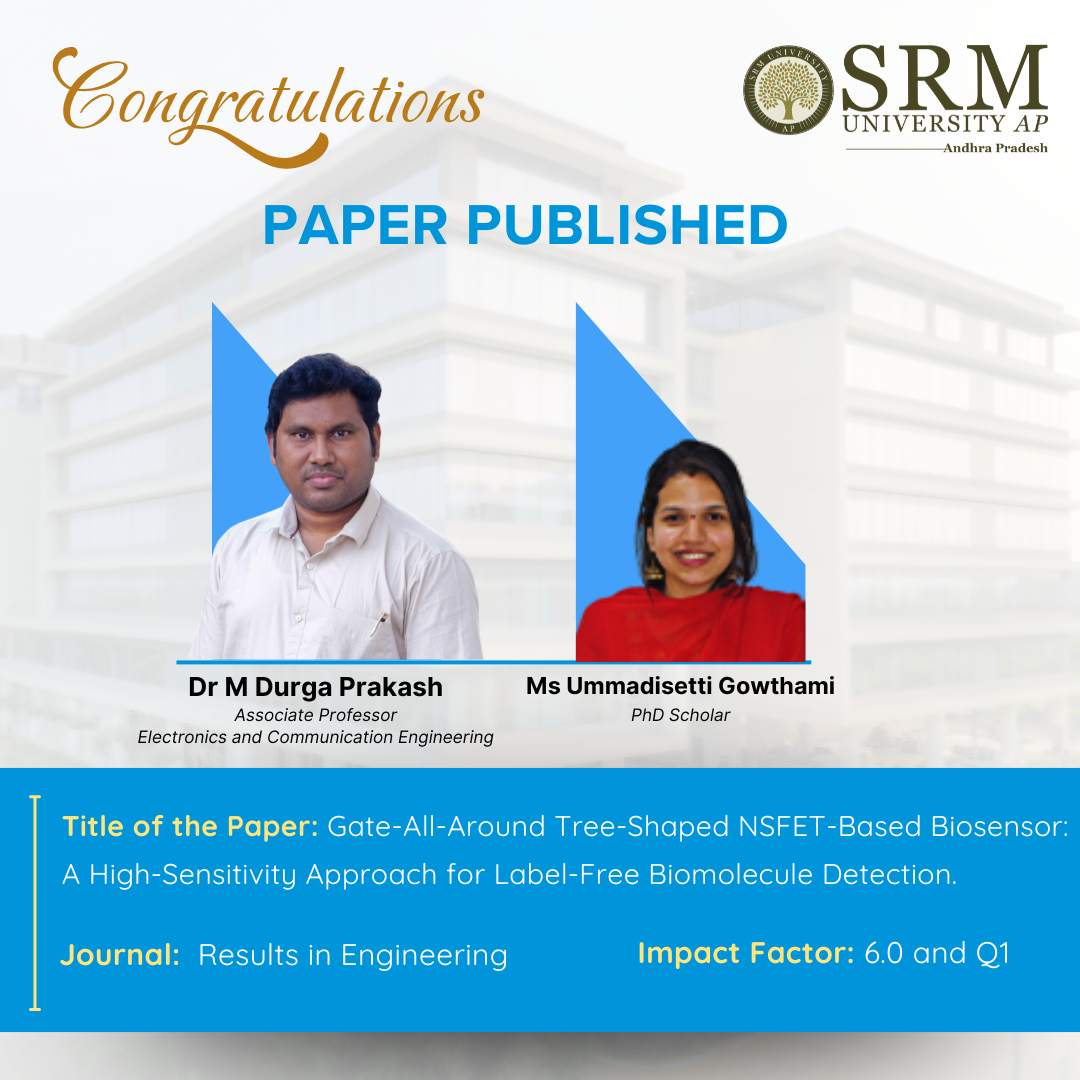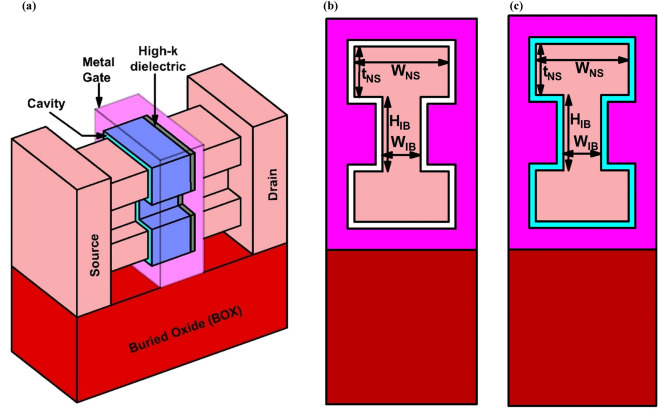 A cutting-edge research paper titled “Gate-All-Around Tree-Shaped NSFET-Based Biosensor: A High-Sensitivity Approach for Label-Free Biomolecule Detection” led by Dr M Durga Prakash, Associate Professor in the Department of Electronics and Communication Engineering, and Ms U Gowthami, PhD Scholar, has been published in the prestigious Q1 journal “Results in Engineering” with an Impact Factor of 6.0.
A cutting-edge research paper titled “Gate-All-Around Tree-Shaped NSFET-Based Biosensor: A High-Sensitivity Approach for Label-Free Biomolecule Detection” led by Dr M Durga Prakash, Associate Professor in the Department of Electronics and Communication Engineering, and Ms U Gowthami, PhD Scholar, has been published in the prestigious Q1 journal “Results in Engineering” with an Impact Factor of 6.0.
This study presents a groundbreaking advancement in label-free biosensing technology by developing a highly sensitive biosensor. The device can detect extremely small biological molecules—such as proteins and DNA—without the need for traditional labeling methods that rely on fluorescent or radioactive tags. At the core of this innovation is a uniquely engineered transistor known as the Gate-All-Around Tree-Shaped Nanosheet Field-Effect Transistor (GAA-TS-NSFET). With its distinctive tree-like structure featuring multiple nanosheet branches, this advanced transistor design enables the detection of both charged and neutral biomolecules with exceptional sensitivity.
Abstract :
This paper proposes and investigates a label-free dielectrically modulated biosensor employing a Gate All Around Tree-Shaped Nanosheet Field Effect Transistor (GAA-TS-NSFET). The suggested biosensor’s excellent sensitivity to charged and neutral biomolecules is demonstrated by its electrical properties when evaluated under various biomolecule influences.
A thorough sensitivity assessment is used to assess the sensing capabilities of the biosensors with various channel configurations. As indicators of biosensor sensitivity variation, we examine the subthreshold swing (SS), threshold voltage (Vth), and current switching ratio (Ion/Ioff). According to the findings, an additional channel acts as an interbridge, allowing the tree-shaped biosensor to attain the best sensitivity compared to biosensors based on NSFETs. Additionally, the article investigates how various spacer materials impact sensitivity. We also run several scenarios to see how different fill percentages affect the proposed biosensor’s sensitivity. The amount of biomolecules present determines its sensitivity. Finally, the suggested biosensor’s sensitivity is compared to other notable biosensing application efforts in a status map. The proposed GAA-TS-NSFET-based biosensor outperforms the previous works concerning Ion/Ioff sensitivity.
Practical Implementation of the Research
- Faster & Cheaper Diagnostics – Reduces reliance on expensive lab tests, making healthcare more accessible.
- Early Disease Detection – Could save lives by catching illnesses (like cancer or infections) at earlier stages.
- Less Invasive Testing – Since it doesn’t require labeling (no dyes or radioactive tags), it’s safer and simpler.
- Environmental Benefits – Could replace some chemical-based detection methods with electronic sensing, reducing waste.
Collaborations: School of Engineering, University of Warwick, Coventry CV4 7AL United Kingdom

Fig. (a) 3-D view of GAATree-shaped NSFET-based biosensor; Transverse cross-sectional view of GAA Tree-shaped NSFET-based biosensor: (b) from source side and (c) from drain side.

